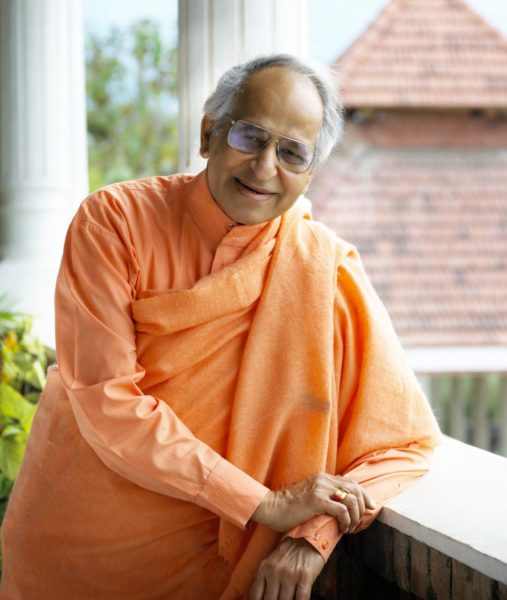
Usharbudh Arya (Now Swami Veda Bharati) – A Glimpse of Family History
Usharbudh Arya
(Now Swami Veda Bharati):
A Glimpse of Family History
A sanyasin (Swami) has moved beyond one family to embrace the world-family in equal love. For this reason, swamis do not normally speak of their pre-sanyasa families. They refer to their pre-sanyasa families as ‘poorvaashrama family’, the family from the previous Ashrama, the preceding station of life. I will call it their pre-history.However, some high level swamis have written autobiographies in which they have detailed the pre-histories of their physical families as context for a guidance that the readers/students/disciples may receive from such writing.Hoping that this writing may give guidance and inspiration, this swami is giving a glimpse of part of his pre-history.
The Mughal emperor, Shah Jahan, who built the Taj Mahal, had a stepmother by the name Noor Jahan (1577-1645). She was a powerful empress who wielded the true royal power in the entire empire during the reign of Shah Jahan’s father, Jahangir (1569-1627). Noor Jahan spent her childhood at a small settlement in Punjab, and later decided that the place where she grew up should be re-established as a proper township. She invited a Brahmin family to settle in the new town and help establish it.
The founder of this family branch was a yogi. After serving the empress by helping establish the township he took jivita-samadhi, a term used when a great yogi decides that s/he has completed his/her life work and it is time to leave the body. A hole is dug in the earth, the yogi sits down at the bottom in meditation, and leaves the body.
Disciples/descendants then cover up the body with more earth and a grave or mausoleum may be built. Such ‘graves’ are called ‘samadhis’. There are hundreds like these all over India where worshipful honouring continues for generations and centuries.The samadhi of the founding father of this branch of the family is one such holy place.This yogi founded the family line from which Usharbudh Arya is descended.The sacred knowledge was passed on to the founding father’s daughter. She also followed on her father’s footsteps and took samadhi the same way. It has been a tradition in the family, established by her command, for four centuries, that a new bride must be brought and presented to this founding matriarch at her samadhi to become a full member of the family.
The land grants given by the empress Noor Jahan sustained the family for 300+ years. How much of the yoga or Vedic knowledge was carried on through these generations I cannot say.The family is now scattered all over the world and hold successful positions. I have met them in Nairobi, Vancouver and elsewhere.In order to respect the privacy of the diverse living lineage of this family, I do not include the place or family names.Samadhi site of daughter of founding ancestor. 350 years passed. Usharbudh Arya’s father decided to give himself to the pursuit of this knowledge and dedicated himself to raising a son who should become a ‘rishi’.That is again a long story of much family ‘tapas’. Washing the samadhi is part of reverence. Even though countries, cultures, circumstances, education systems have changed, the thread of spirituality continues. Accompanying are pictures of two granddaughters (actually grandnieces) meditating under the tree next to the holy samadhis. Shruti, another granddaughter, meditating at Samadhi site. Shivani, granddaughter, meditating at Samadhi site. Who will be the yogi descendants in the family, how many generations and how many centuries from now – cannot be said. The family samskaras continue to be passed on. Would the founding father of the American branch of the family be thus blessed four centuries from now, with a yogi down that line ? Let us pray that a positive answer manifests itself.
In order to accomplish the spiritual goals for his son Usharbudh, his father Pandit Durga Das, cut himself off from all relationships and external worldly samskaras that might touch his son. The result is svb.
Dedicated to the transcendent, avoiding confinements of personal relations, Svb met one of these physical relatives for the first time in his life only 4 years ago – the only first cousin who searched and found and came to see svb at SRSG Ashram.These family members think that this svb may be the same founding father re-born. Now, 400 years have passed. One last word:
Some months before Gurudeva left his body he called over to his chamber and instructed:
“The day you sit down in Samadhi and ‘will’ it that
‘I will now leave my body’, only then you will leave your body.”
Svb now wishes to prepare for that moment, of Guru’s prediction/instruction coming true, by taking five years’ silence from 2013. More than 400 years will have passed since this family’s founding father sat in samadhi and willed himself to leave. Only the Guru knows whether svb’s wish to follow the footsteps of his ancestor and other yogis will be blessed with success.




